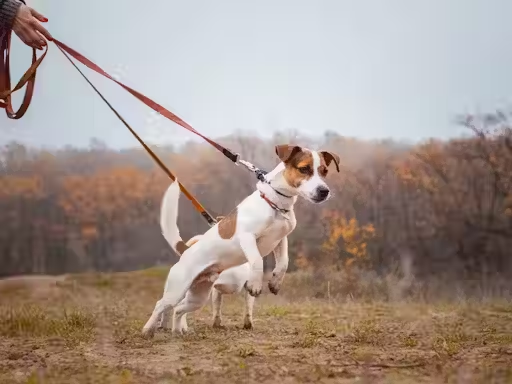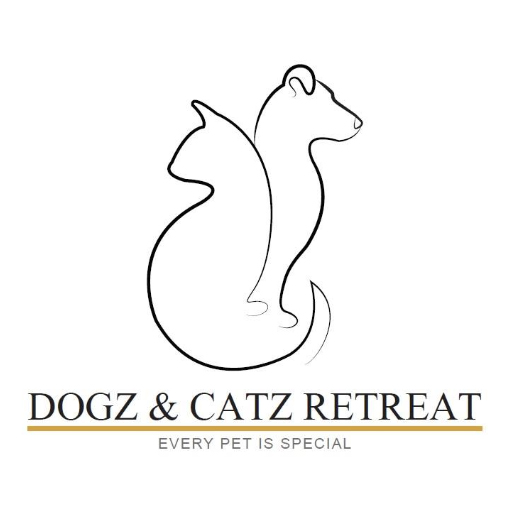Transform Your Reactive Pup:

Safety Strategies Every Owner Needs!
Dogs, just like humans, have their own unique personalities and experiences that shape how they react to the world around them. Some dogs may respond calmly to unfamiliar situations, while others may react with fear or aggression. Understanding and managing a fearful or reactive dog can be challenging, but with the right approach, you can keep your dog, yourself, and others safe while helping your dog feel more secure.
Here’s a guide to navigating your dog’s reactivity or fearfulness with empathy and patience.
- Recognise and Understand Reactivity and Fear
A reactive or fearful dog is often a dog trying to communicate distress, whether it’s from fear, overstimulation, or anxiety. Typical signs include barking, lunging, growling, or cowering. Specific situations such as encounters with strangers, other dogs, or loud noises might trigger these behaviours. Recognizing these behaviors and understanding what triggers them is the first step toward keeping everyone safe.
What Causes Reactivity?
- Lack of socialisation refers to limited exposure to new situations or people.
- Past trauma: Rescue dogs may have experienced abuse or neglect.
- Genetics: Some breeds and individual dogs are naturally more reactive.
Understanding these triggers will help you anticipate situations that may cause stress for your dog.
- Stay calm and keep your distance.
When a dog becomes fearful or reactive, it’s crucial to stay calm. Dogs pick up on our emotions, so an anxious or tense response can make your dog even more nervous. Keeping a safe distance from whatever is triggering your dog’s reaction can also help de-escalate the situation. If possible, create a buffer between your dog and the stressor to allow them to feel more secure.
Tips for Calming Yourself and Your Dog:
- Take deep breaths to calm your energy, which helps your dog relax.
- Avoid direct eye contact with your dog if they’re visibly distressed, as this can sometimes escalate their reactivity.
- Use a calm voice and avoid raising your voice, which can increase tension.
- Use the proper equipment for control.
Using safe, reliable equipment, such as a harness and leash, is crucial for maintaining control. A well-fitted harness can give you better control while distributing pressure evenly across your dog’s body, which is safer and more comfortable than a collar. Avoid retractable leashes, which are harder to control and may be dangerous.
Recommended Equipment:
A front-clip harness provides improved control and prevents your dog from pulling.
A double leash, which attaches one leash to the collar and another to the harness, provides extra security in the event of an escape attempt.
Basket muzzle (for highly reactive dogs): A well-fitted muzzle ensures safety for everyone involved while allowing your dog to breathe and pant comfortably.
- Manage the environment and avoid triggers.
Whenever possible, avoid exposing your dog to known triggers. If your dog is reactive around other dogs, choose quiet routes or times for walks when encounters are less likely. Avoid crowded areas where unexpected triggers are harder to control.
Tips for Minimising Triggers:
- Plan your walks during off-peak times to avoid crowds or other dogs.
- Scout new locations before taking your dog, noting potential triggers like loud noises or high foot traffic.
- Have a backup plan if you encounter a trigger unexpectedly, such as turning and walking away calmly.
- Use positive reinforcement to create positive associations.
Training a fearful or reactive dog requires patience, consistency, and plenty of positive reinforcement. Using treats, toys, or praise, you can help your dog associate potentially stressful situations with positive experiences.
Steps to Positive Reinforcement Training:
- Start at a distance from the trigger where your dog feels safe.
- Reward calm behavior with treats or praise, reinforcing their sense of security.
- Gradually decrease the distance over time as your dog becomes more comfortable.
- Practice regularly and always end on a positive note to build their confidence.
- Respect your dog’s limits and avoid overexposure.
It’s essential to respect your dog’s limits. While gradual de-sensitization can help, flooding or forcing a dog into uncomfortable situations can lead to increased fear and reactivity. Progress may be slow, but respecting your dog’s pace will help them feel more secure and build trust over time.
Signs of Overstimulation:
- Panting or yawning excessively
- Pacing or cowering
- Refusal to consume treats is indicative of elevated stress levels.
If you notice these signs, remove your dog from the situation and allow them time to calm down in a safe environment.
- Educate others and set boundaries.
Well-meaning strangers may try to approach your dog, unaware of their needs. Educate those around you by politely explaining your dog’s boundaries and asking for their cooperation. You can also use visual aids, such as a yellow “caution” or “nervous” bandana, to signal to others that your dog needs space.
How to Set Boundaries with Others:
- Politely ask others to keep their distance and explain your dog’s need for space.
- Use signals like hand gestures to indicate to people not to approach.
- If children are nearby, remind them not to approach or pet your dog without permission.
- Practice patience and seek professional help if needed.
Working with a fearful or reactive dog can be a long journey. Patience and consistency are keys to progress. If your dog’s reactivity is severe, consider working with a professional dog trainer or behaviourist who specialises in fear and reactivity. They can help create a customized training plan, provide guidance, and offer additional support.
What should you look for in a trainer?
- I have experience working with fearful or reactive dogs.
- Use positive reinforcement techniques (avoid trainers who use punishment-based methods).
- Obtain credentials or certifications from reliable training institutions
- Prioritise your dog’s emotional well-being.
Ultimately, helping your dog feel safe and confident is the best way to manage reactivity. By prioritizing their emotional well-being, you’ll create a deeper bond and provide a foundation for a more positive outlook. Celebrate small victories, acknowledge progress, and give yourself and your dog credit for every step forward.

